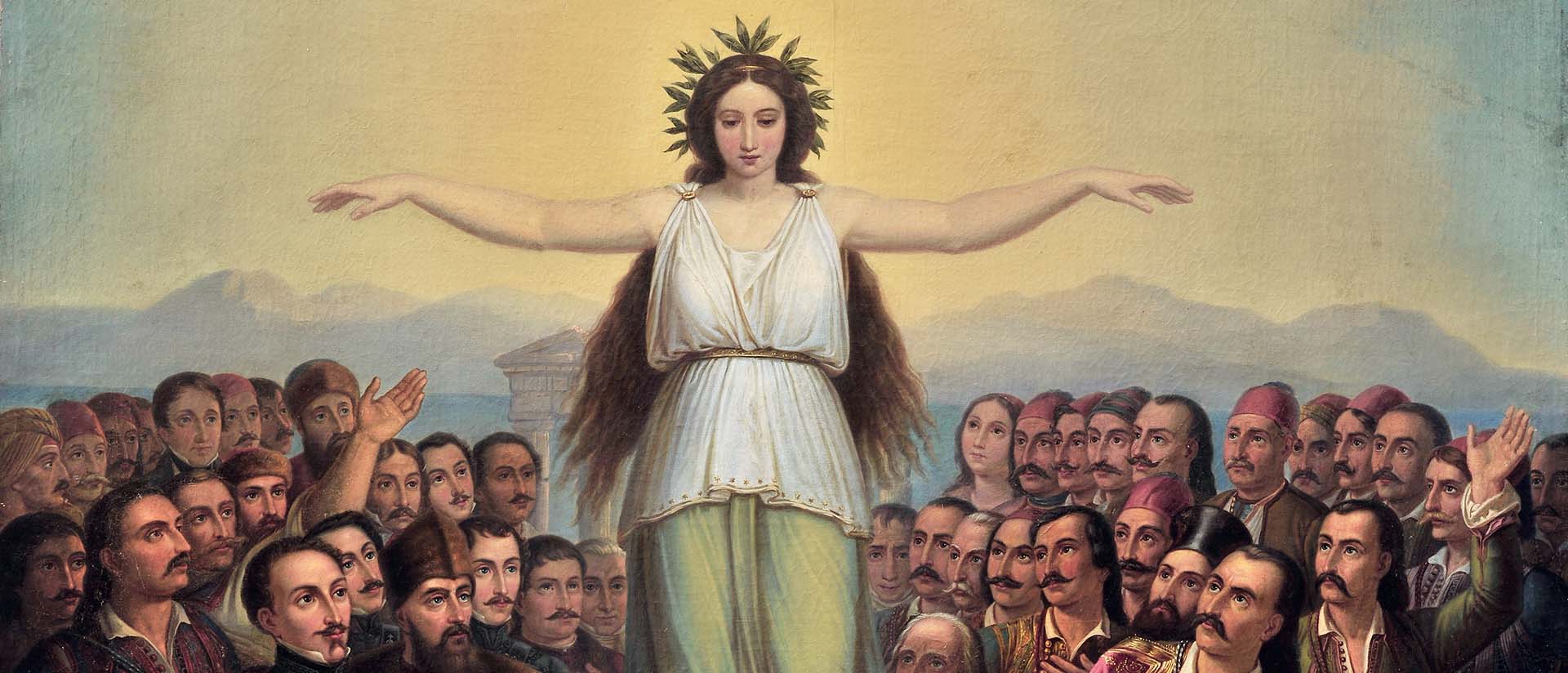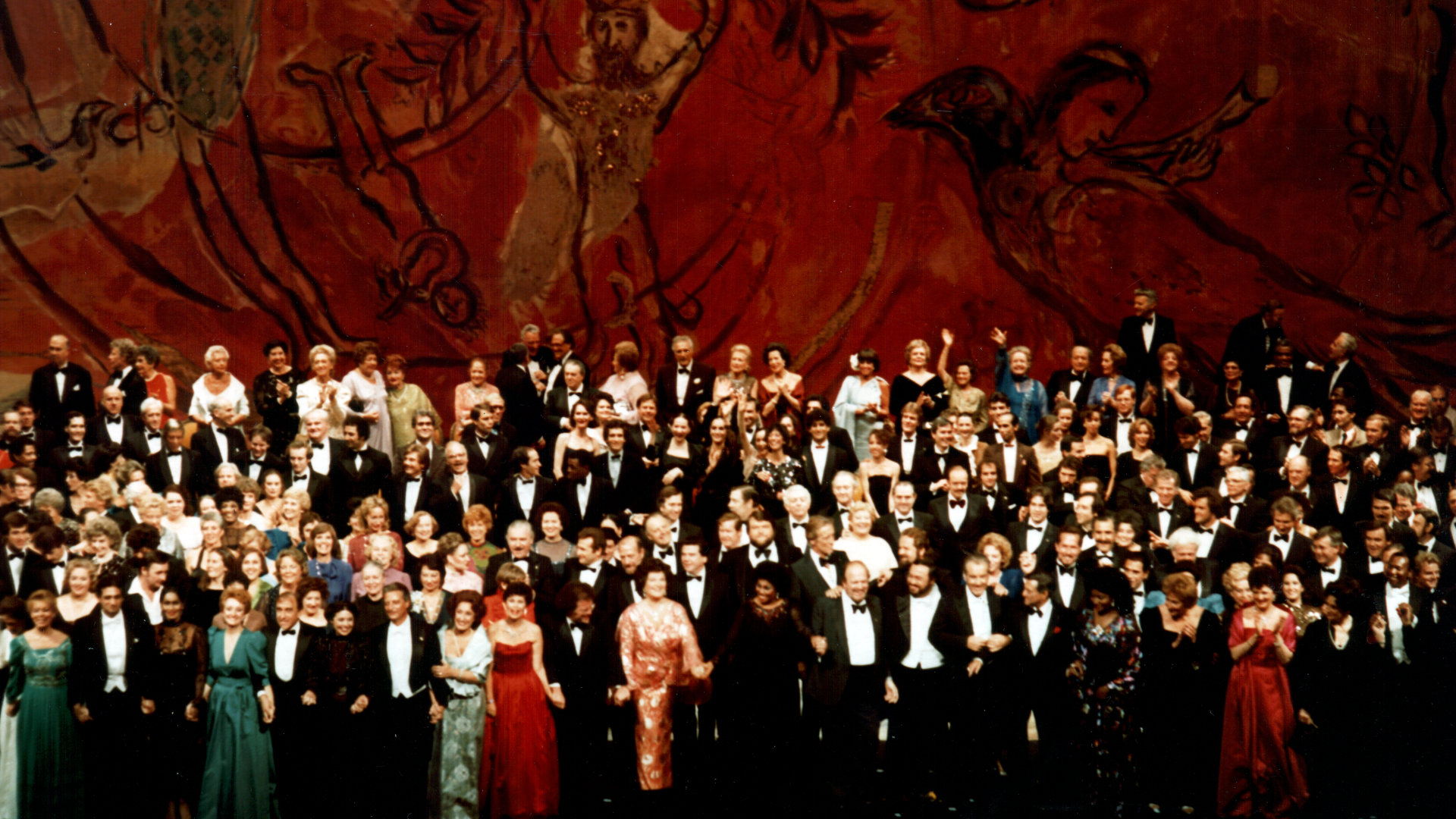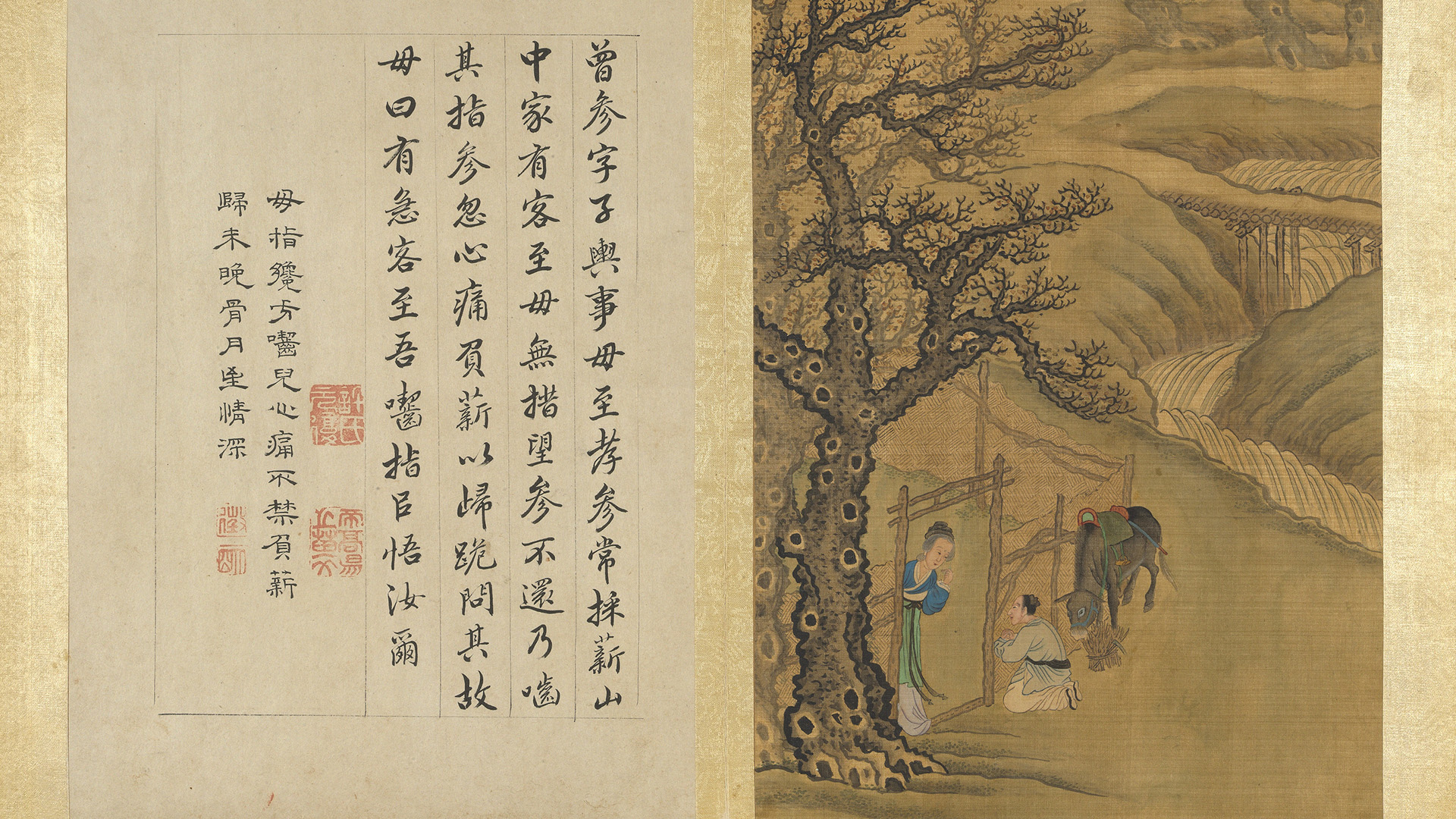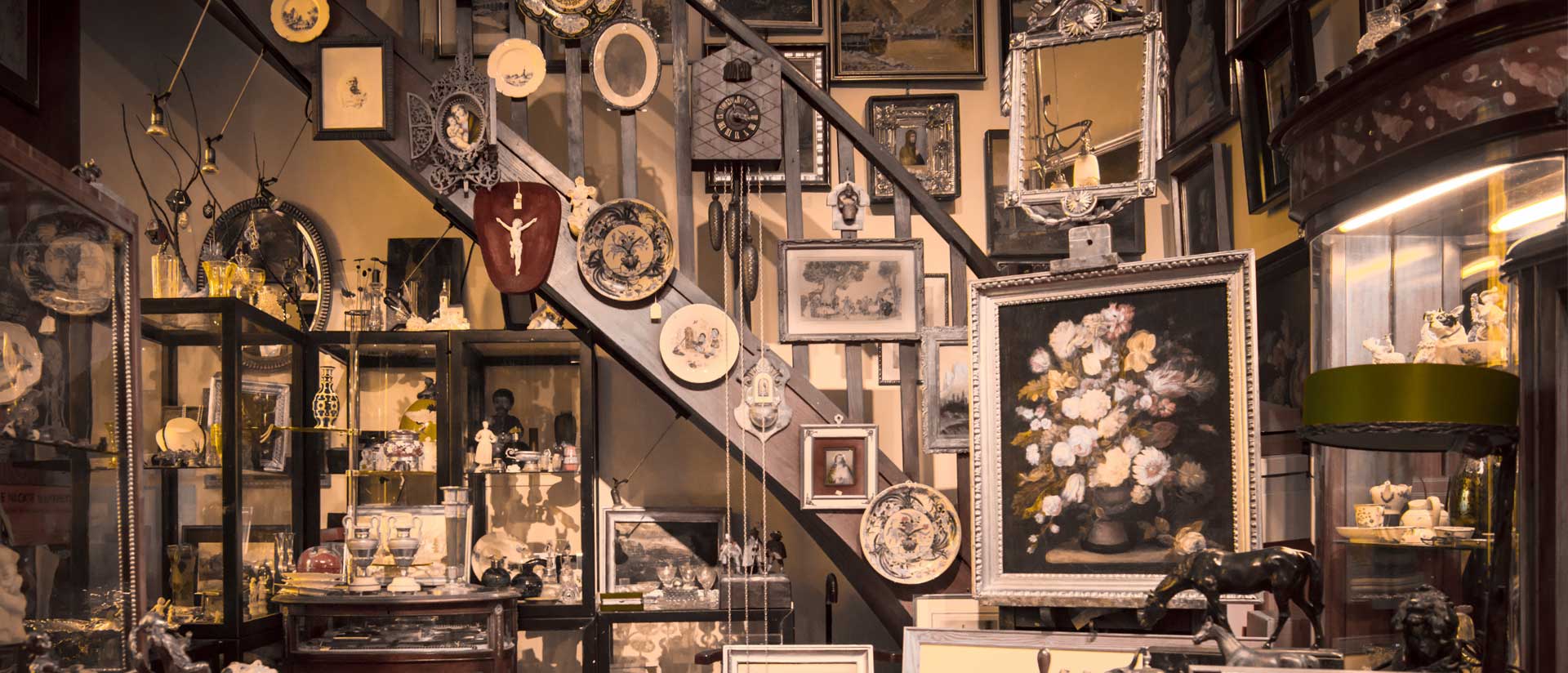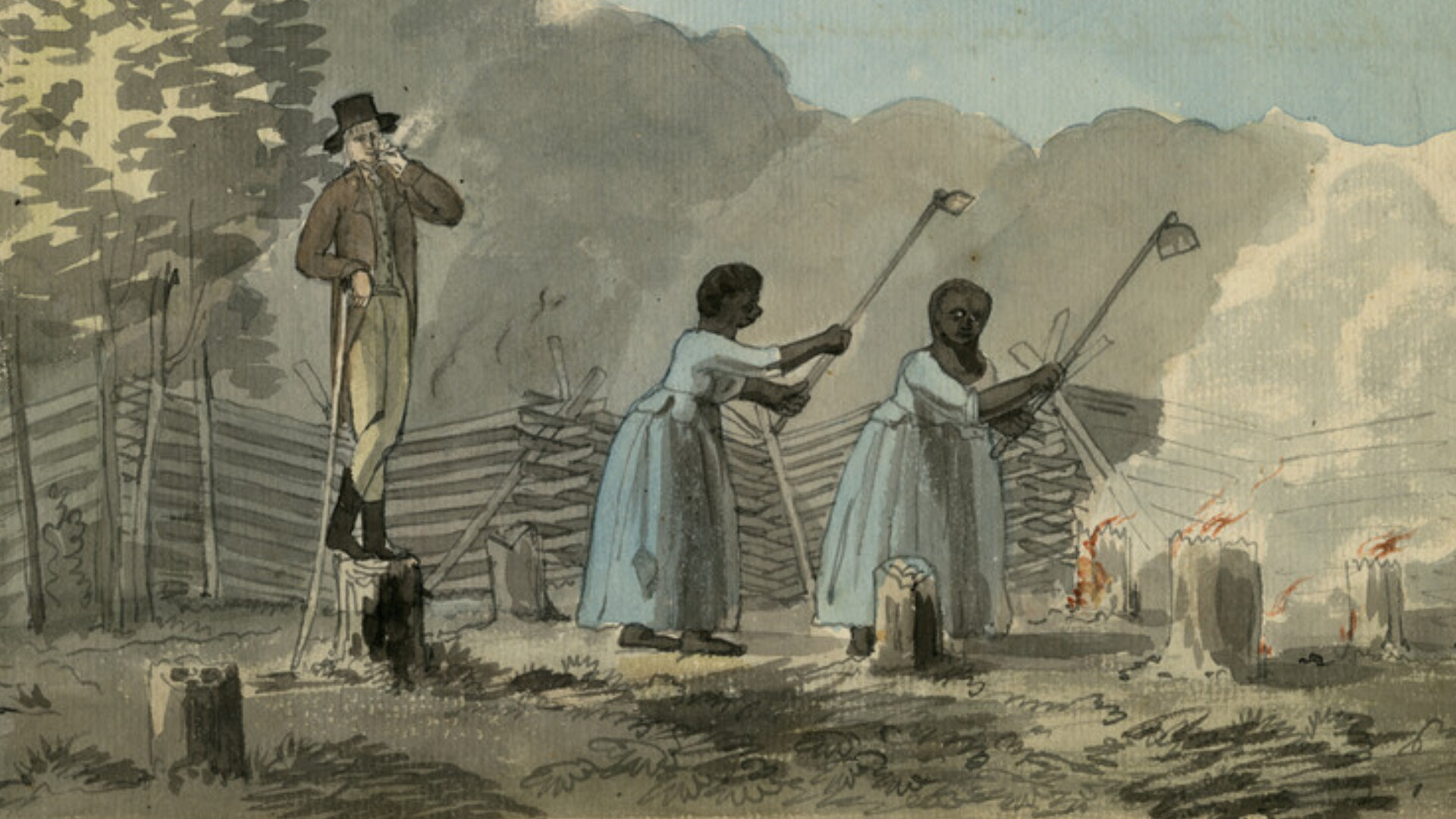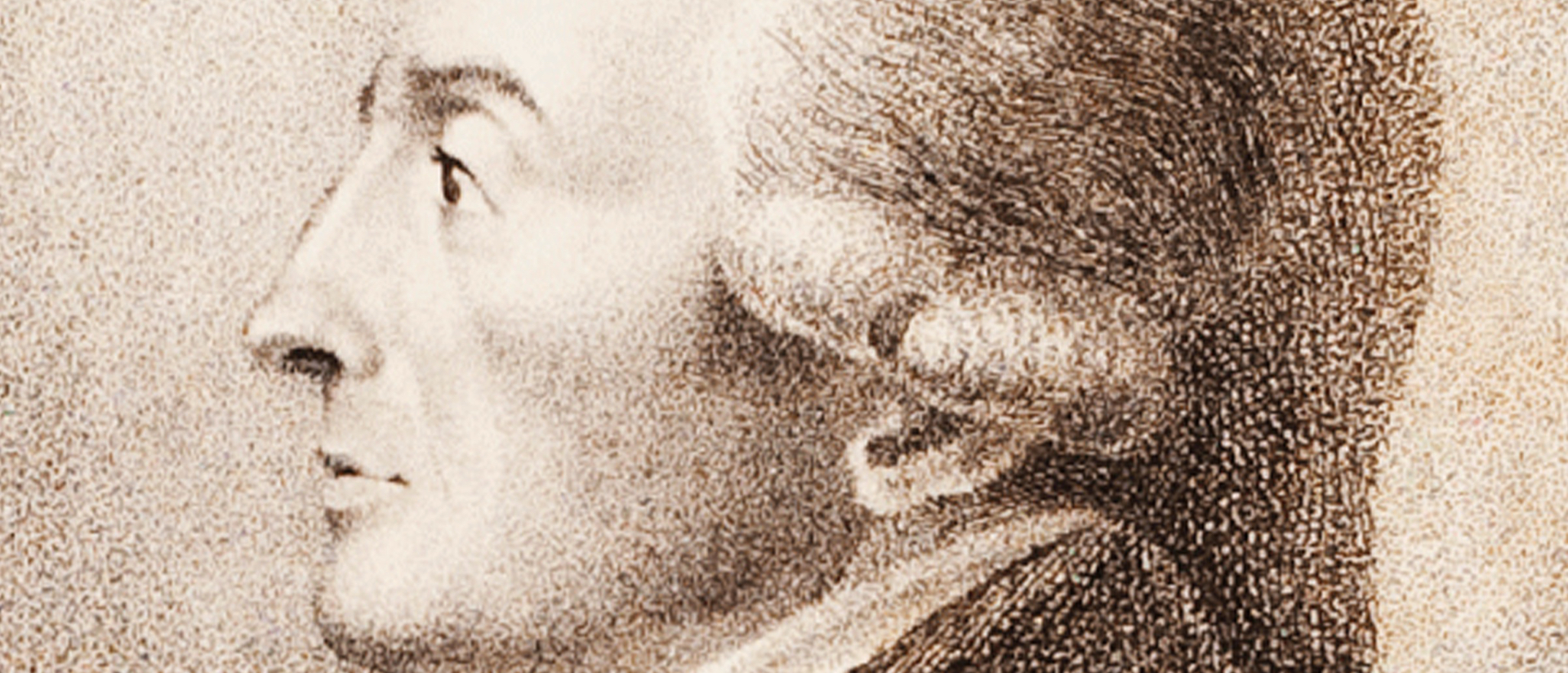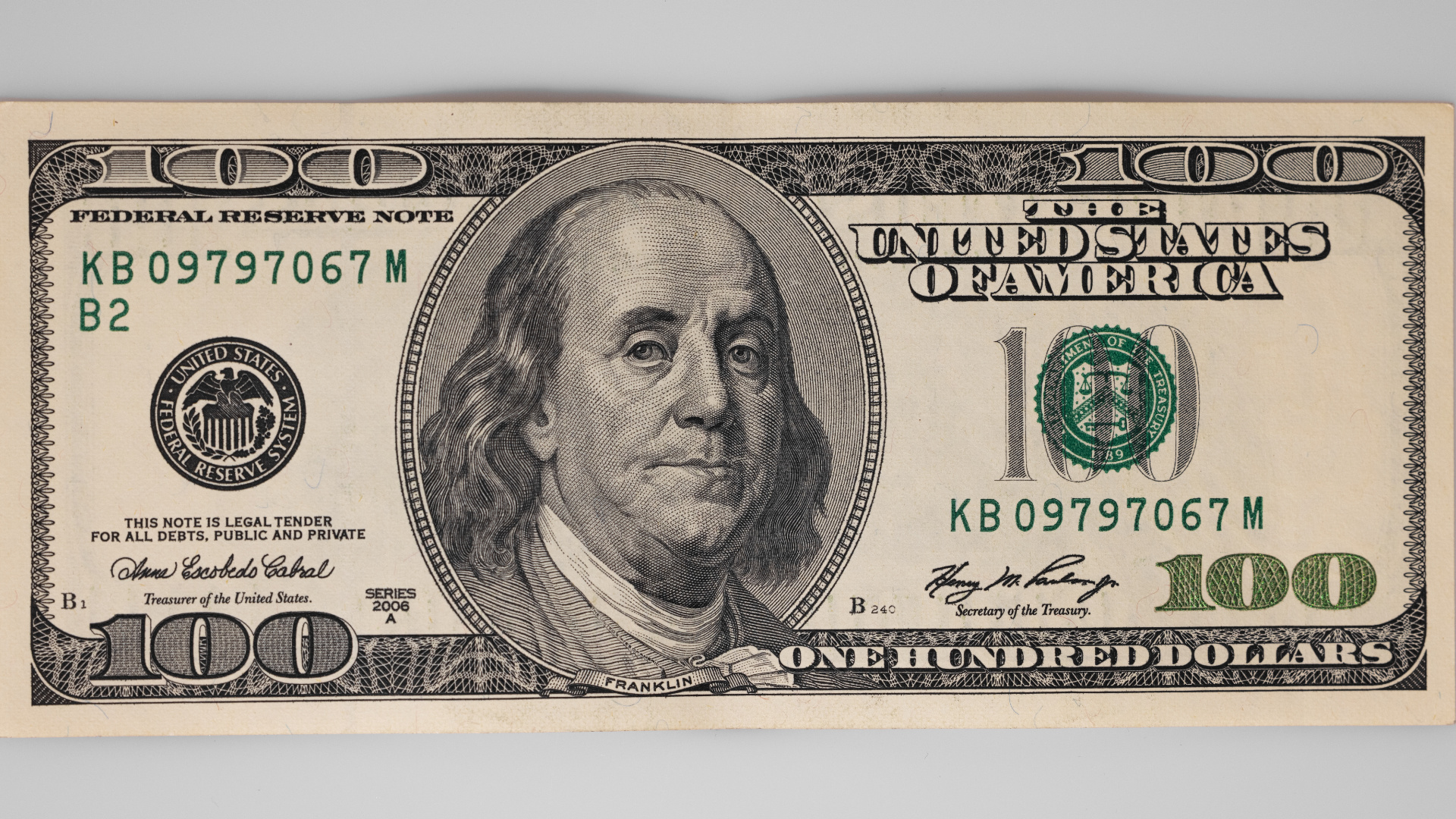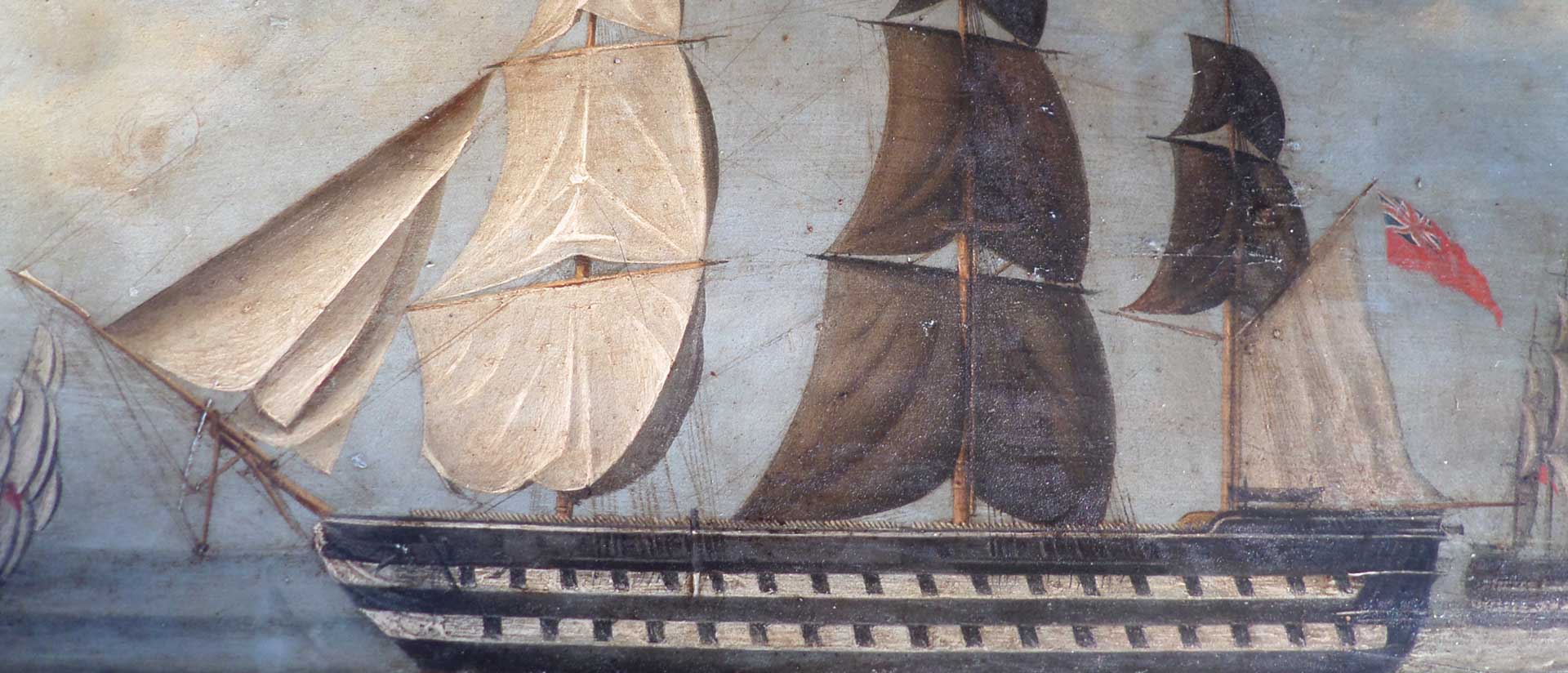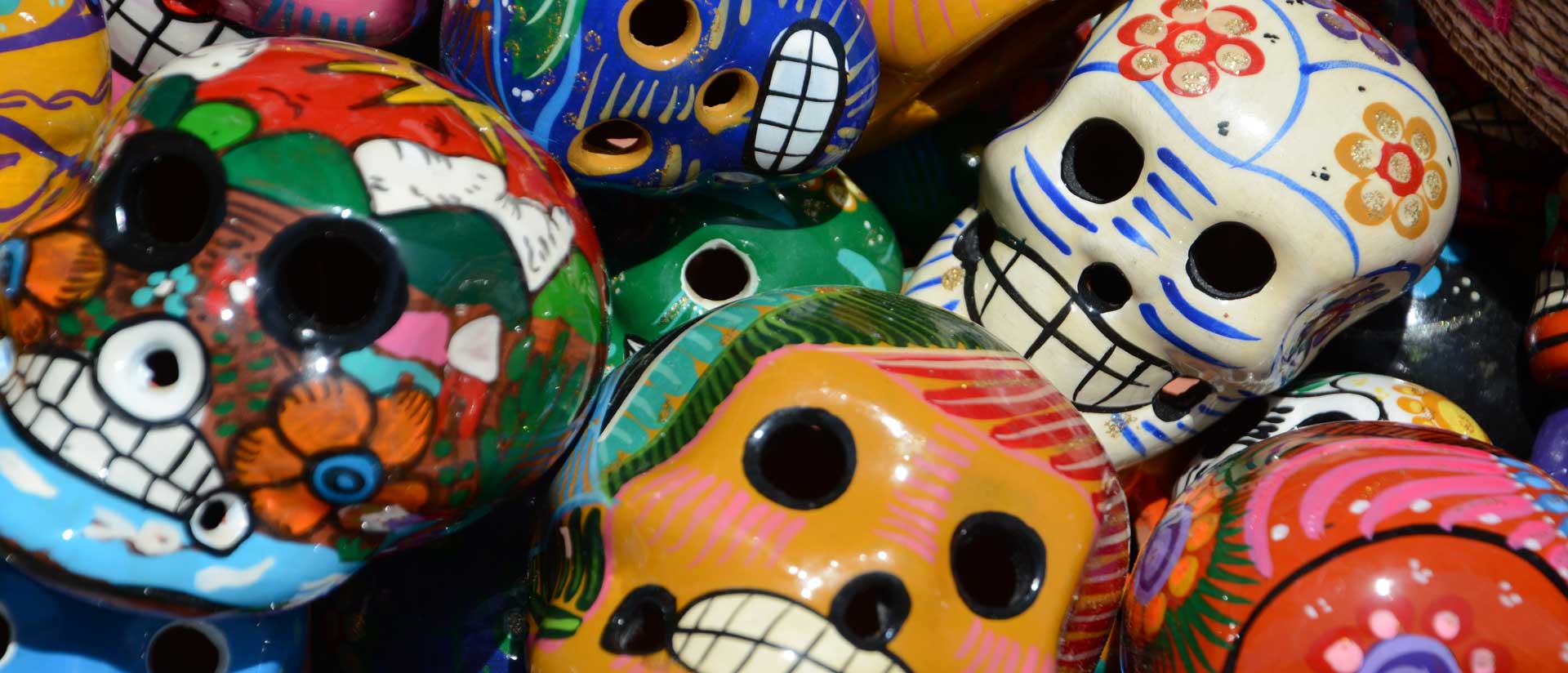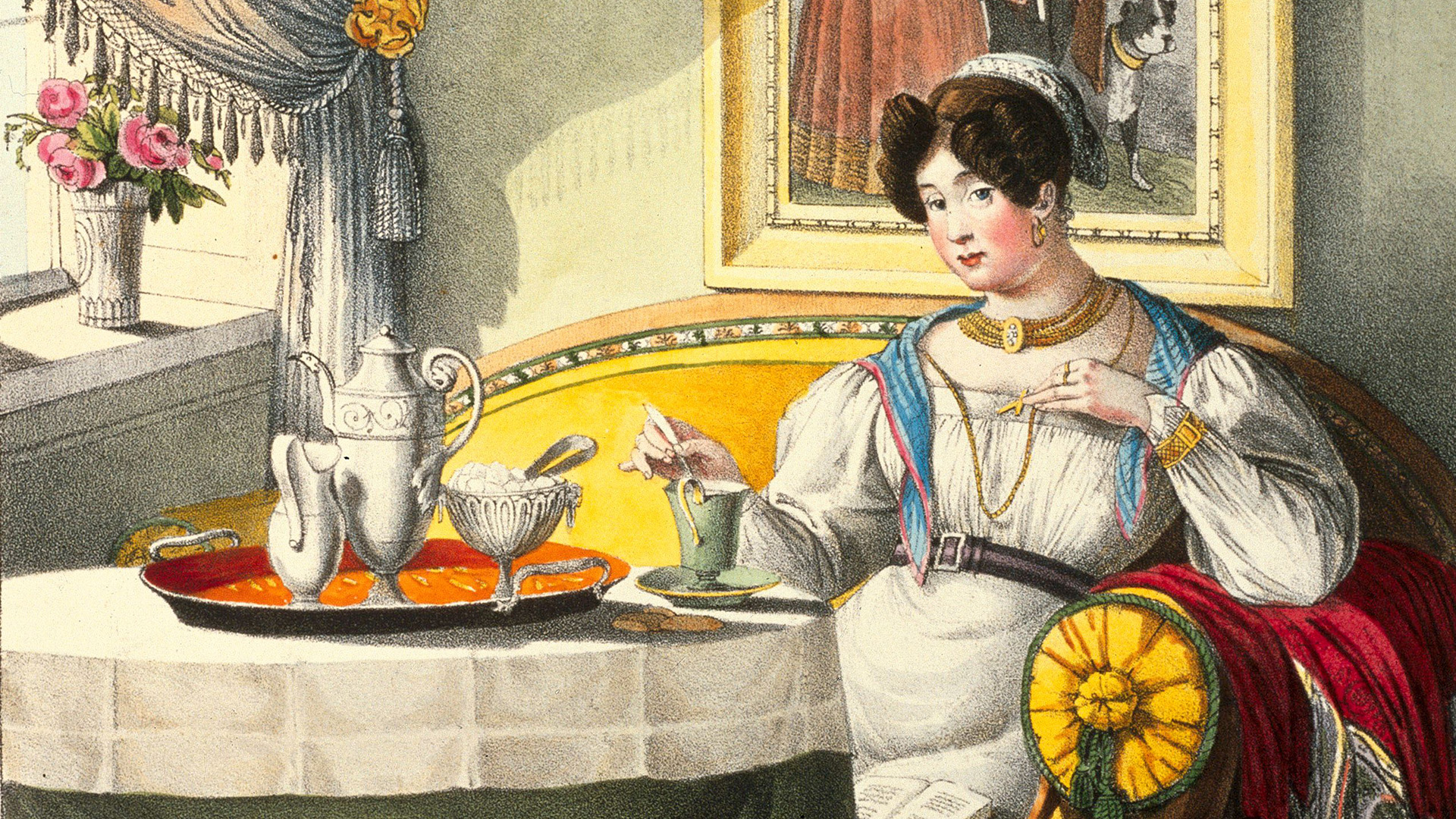
Cozy, Fragile Things
The remarkable diversity of Biedermeier porcelain
by Suzanne L. Marchand
The term “Biedermeier” calls to mind gentle caricatures inhabiting the pictures of Carl Spitzweg and other nineteenth-century genre painters, in which plump, prosperous, self-assured bourgeois husbands and wives disport themselves in comfortable salons or provincial gar- dens. Be that as it may, we actually know little about the actual tastes of these happy denizens of German-speaking lands in the first half of the nineteenth century—or how entrepreneurs discovered and catered to them.
For too long, we historians, propelled perhaps by a lingering Marxian hangover, have assumed that the era’s consumers were simply “feudalized,” falling into the habit of copying their aristocratic betters. In so doing, we have ignored small business owners in favor of focusing on large industrial concerns and the impoverished workers they produced.
But recent, careful explorations of the economic and cultural history of the early nineteenth century have un- earthed a rich and eclectic world among this generation of ingenious (and not so ingenious) entrepreneurs, who sought to satisfy growing demand for a wide range of semi-mass- produced products—from books, straw hats, and soap to tea sets, soup bowls, and iconic figurines. In what follows, I focus on a single industry as a means to explore the neglected story of “the consumer revolution” in Central Europe and to probe what the porcelain tastes of this generation might tell us about the aspirations and self-conceptions of this generation.
To begin with a broad generalization, consumers in the Biedermeier era favored porcelains that created a gemütlich (cozy) and gebildet (cultivated) atmosphere, or which spoke to a kind of local patriotism mixed with a gentle nostalgia for days gone by. “Gallantry objects” such as asparagus-shaped needle cases, made for eighteenth-century courtiers, had gone the way of the powdered wig. After 1820, buyers increasingly demanded more serious statuettes—Frederick the Great, Aristotle, and John the Baptist—rather than the playful and slightly risqué figurines ubiquitous in the pre-revolutionary era. Most of the porcelain Biedermeier consumers bought was plain white, or blue and white, either in an “Asian” style or adorned with “German” or “Indian” flowers. But there was another less popular, less available and therefore more expensive repertoire of ceramics comprised of painted pipes, tableware, figurines, and busts whose shapes and designs shed light upon a dynamic world of the era’s aesthetic and moral sensibilities.
Most of the porcelain Biedermeier consumers bought was plain white, or blue and white, either in an “Asian” style or adorned with “German” or “Indian” flowers.
In the case of the painted pipes, we can be relatively sure we are seeing men’s taste reflected; in the case of much of the tableware, we can guess that women were the foremost choosers, especially as shops spread to smaller towns. As for the figurines and busts, some of these seem to be oriented to the male study or smoking room; others seem more likely to have appealed to women, for display in boudoirs or family spaces, but we can’t be entirely sure. We also know that factories were willing to cater to individual orders. Consumers could, for example, choose a dinner-plate style, then a rim color and painted decorations, if desired, or order services tailored to their needs. Individualized poems, inscriptions, or portraits could be added, just as the customer wished. Chances are that no two homemakers in Leipzig, for example, had exactly the same tea service.
Let us consider, first, the diversity of shapes. Each manufactory offered at least two choices of “forms” for their services—one simple, the other more intricately modeled. In 1826, for example, the Gießhübel porcelain manufactory, near Karlsbad, offered cups in “Chocolate,” “Antique and Conical,” and “Campagnian and Etrurian” forms; having made this choice, the customer could then opt for blue, multicolor, or white decoration, with or without gold rims.
Form fashion changed over time; the sling-handled “Compagnia” cup was popular between about 1800 and 1815, together with delicate, thin-handled conical shapes. The 1820s preferred footed, fluted cup forms.
In addition to the full tea-services, customers could choose from hundreds of types of teapots and cups. One could buy butter boxes, soup tureens, sugar bowls, inkstands, mirror frames, pitchers, and, of course, chamber pots. Figurines of very various sorts were also available, as were a dizzying array of pipe designs. “Lithophanes,” too—thin, unglazed porcelain reliefs made to stand in front of lights or windows—proved big sellers for a time and were made by most fine manufactories. All these things could be had in different sizes, at differing levels of quality, with or without gilding or decoration. Prices also varied widely, but, in real and often absolute terms, they had fallen sharply since the mid-eighteenth century. Hoping to impress the finance ministry in 1828, Meissen officials noted that a large gilded plate could now be had for less than half its price in 1765.
One could buy butter boxes, soup tureens, sugar bowls, inkstands, mirror frames, pitchers, and, of course, chamber pots. Figurines of very various sorts were also available, as were a dizzying array of pipe designs.
Falling prices made the increasing accumulation of porcelain more possible for people of middling means. At a time when a well-paid clerk would have made no more than 150–200 Taler (T) a year, full, top-quality services remained quite expensive: a 102-piece, 12-place Meissen white service came to 41 T; a blue service such as the “Onion” pattern came in at just over 52 T. Adding flowers and gold rims brought the cost up to 116 T, or more than a half year’s labor for our clerk. Stoneware was a bit less expensive, though a fancy service would still have cost our buyer about two months’ income. Smaller, plainer pieces were much more affordable. In 1828, one (private) factory offered a white coffee-service for 12 for slightly less than 5 T (9 T with gilding). At about the same time, a stoneware factory in Prague, advertising its Wedgwood-like styles, offered its top-quality coffee pot for a little less than 1 T. One could buy a small teapot from Berlin’s Königliche Porzellan Manufaktur (KPM) for about the same price, and a teacup for five silbergroschen, or about one-sixth of the cost of the pot.
To paint a general picture of decoration, we can note a great uptick in the number of landscapes and city vistas, often local. In the 1820s and ’30s, we find increasing numbers of tea sets designed for intimate moments, between friends, family members, or lovers, with images or mottos that emphasize the virtues of friendship or familial affection. Following a spate of popular books on “the language of flowers,” porcelain makers were flooded with orders for specific floral patterns; high-quality flower-painters, such as the Viennese Royal Manufactory’s Joseph Nigg, were in great demand.
The usual classical subjects remained in the repertoire— Cupid and Psyche, Venus, Hercules, Zeus—though the more risqué figures—satyrs, nymphs, Europa—flagged; a Biedermeier Priapus seems almost a contradiction in terms. Correspondingly, religious scenes, particularly Madonnas, now flourished. By the 1830s and ’40s, neo-Gothic, neo-Byzantine, and Moorish designs could also be ordered, herald- ing the full onset of historicism. Extremely popular in the period—and speaking directly to its eclecticism—were mismatched teacups, suitable for placing on display on a mantel or handing out to specially chosen guests. These might feature a special poem or marriage date, a favorite flower or portrait, a beloved landscape or bird. In one 1826 example from the Viennese manufactory, “Without You, I Can Not Live,” was inscribed on the saucer, which accompanied an elegant gilded cup adorned with a flowering coffee plant.
To immerse ourselves fully in the porcelain culture of this age, let’s look at some additional concrete examples of decorative options offered by the manufacturers, starting with the less expensive wares. In cheapness, after the plain whites came copperplate-printed and underglaze painted wares. Meissen perfected underglaze green and succeeded in attracting bourgeois customers with its “Old German” vine pattern and with painted relief decorations adopted from pressed-glass models. The KPM, too, offered green-and-black designs, including lion paws, a memento mori, a wild boar, and Frederick the Great on horseback. Standard inscriptions included “May your hopes and dreams be realized,” “For the lady of the house,” and “For the good child.” The Villeroy & Boch model book for 1831–44 displays a range of available copperplate-printed landscapes, some local, some Italian, including many churches and ruins; some animals (deer, cows, rabbits, donkeys) and soldiers; some gentle jokes (usually involving soldiers); a few Turks on horseback; and two Chinese scenes, one with a figure kowtowing and another featuring a highly “orientalized” mandarin. For fuller purses, Nymphenburg issued plates depicting picturesque Bavarian scenery and folk costumes as well as a set narrating the Nibelungenlied; recognized Romantic artists such as Wilhelm von Kaulbach and Peter von Cornelius contributed designs. Fürstenberg expanded its flowered offerings, as well as its military heroes, holy families, and local landscapes; both the playwright August von Kotzebue and his republican assassin, Karl Sand, were portrayed in porcelain, as was the Wartburg, Martin Luther’s erstwhile refuge and scene of an important nationalist rally in 1817. The KPM answered with an elegant cup and saucer commemorating the 1813 Battle of Leipzig, the key turning point in the fight against Napoleon.
Figurines had perhaps lost their fashionableness, but they were still made in astounding varieties; they also give us an even stronger sense of what Biedermeier buyers thought worthy of display in their homes. On the whole, a combination of seriousness and Gemütlichkeit won out over the eighteenth century’s love of playful gallantry and soft porn (though there was still nudity on display, especially in figurines of Venus and Psyche). Real historical personages were now more common than allegorical or perhaps even mythological ones, though the Greek gods and nymphs held their own. An 1828 KPM price list, for example, featured Prussian royals, two czars (Alexander and Nicholas), and four Napoleonic-era generals, all in biscuit porcelain—unglazed white wares with a matte finish. Goethe, Schiller, Mozart, and Herder represented the intellectuals, and one could also opt for Christ, Cupid and Psyche, or Bacchus with fauns. Most manufactories made folk figurines, with Russians and Circassians joining the ranks of the exotic.
Figurines had perhaps lost their fashionableness, but they were still made in astounding varieties; they also give us an even stronger sense of what Biedermeier buyers thought worthy of display in their homes.
Lithophanes, too, give us insight into the imaginations and self-projections of the world of the 1820s and early 1830s. Patented in France in 1827, these novelties were made by transferring a copperplate engraving to a wax mold, from which a porcelain plate could be made. The result was a semi-transparent relief that could be displayed near a window or in front of a lamp to illuminate the scene. An 1828 list from a Paris manufactory included the omnipresent Raphael Madonnas and Thorwaldsen’s Night and Day, as well as Cupid’s uncovering of Psyche. There were numerous children, cupids, and cats, as well as a drunk and a shepherdess, Charles X, Henry IV, the English politician George Canning, and the Greeks at Missolonghi. An 1830 list added monkeys, a ship- wreck, more landscapes, and Susannah bathing. Not to be outdone, the KPM offered Madonnas, castles, and cats, but also the head of John the Baptist, Faust and Gretchen, and the Rape of Hylas—181 scenes in all. By 1840, this list had expanded to 231 offerings, now including a whole series of Greek (18) and Roman (9) heads in which Lycurgus, Pericles, and Cicero were included, but, interestingly, no Caesar or Augustus. By about 1860, the KPM was offering an astounding 554 different lithophanic images, the older models retained but now enhanced by more generals and kings (including Frederick the Great as an idealized child), Romeo, Alexander von Humboldt, and the Indian princess and eponymous heroine of the Sanskrit poem beloved by the Romantics, “Sacontala.”
By the 1840s, much of the porcelain intended for domestic use was probably purchased by women, but men, too, were purchasers. Tobacco, which had been cut off by Napoleon’s blockade, had become affordable to most men by the 1830s, and pipe smoking was highly popular at least until the 1850s, when cigarettes and cigars came into fashion. Smoking even gained new respectability after the cholera epidemic of 1831, when the rumor spread that smoking kept dangerous miasmas at bay. That year, Berlin makers alone produced more than one million pipes, half painted with colorful enamels. Evidently, as the upcoming lists suggest, men of the period chose or commissioned pipes that expressed something particular about them- selves, rather as their wives and daughters expressed them- selves in choosing coffee cups featuring sentimental scenes or silhouettes of the beloved. In their own way, Biedermeier pipes testify to the emergence of a new form of bourgeois self-confidence.
A list of pipe designs offered by Meissen, most of them costing less than 1 T, reflects the wild diversity of men’s tastes in this eclectic era. It began by offering probably its most popular images: of the hunt, landscapes and seascapes, military troops on foot or horse; of prominent royals, writers, or musicians; of cities in “interesting” regions; of symbols or scenes pointing to the smoker’s employment in a particular trade such as medicine or mining, or his status as a freemason, or both. Standard depictions included a Tyrolian brewer with the ambiguous motto: “My tap/cocks serve all comers” and a macabre scales with two skulls and the motto: “Rich or poor, in death the same.” For a bit more (2 T 12 groschen) the customer could order Aesclepius, Venus, Bacchus, or Jupiter, alone or in various groups with Leda, Europa, or Danae. Or one could choose a man lean- ing on the breast of a maiden with the timelessly cheerful motto: “He who dies like this, dies well.” The Christian could choose Jesus declaring, “I will conquer”; or the sly anti-Semite Nathan Rothschild captioned with a line from Schiller’s “Ode to Joy,” “Millions, let yourself be embraced!”
The unrepentant Saxon soldier could contentedly smoke a pipe picturing Napoleon’s grave on St. Helena. And the list continues: the literary man could choose scenes from Macbeth or from Walter Scott; the history buff, Joan of Arc, Wallenstein, or Wilhelm Tell. Rogues could purchase pipes depicting scantily clad girls of all classes, or a scene described as “the Turkish maiden market.” Other manufactories, too, produced a similar range of pipes, with the romantic or gently erotic frequently featured. One design even twitted men so ignoble as to consume their tobacco in the shape of cigars, picturing the offending items being stuck firmly into life-sized human buttocks. Together with sentimentality and piety, lashings of humor are indeed to be found in the consumer culture of this era.
The literary man could choose scenes from Macbeth or from Walter Scott; the history buff, Joan of Arc, Wallenstein, or Wilhelm Tell.
Despite the exhaustiveness of these lists, however, they don’t even begin to capture the immense variety of Biedermeier porcelains as a whole, for it is also during this era that porcelain painting at home became feasible, offering an apparently attractive way for women to pass their time and to create personalized gifts. The nineteenth century was the great era of women’s crafts, ranging from simple embroidery to the creation of intricate shell collages and jewelry made from the hair of the deceased. For middle-class women and girls, the making of gifts for family and friends consumed untold hours and generated powerful emotions. Although embroidery and knitting—taught to girls as young as three years old—played the major role here, porcelain too took part in this almost oppressive cult of the homemade.
All this diversity flies in the face of our assumptions about industrial standardization, and about Biedermeier “feudalization” or homogeneity. Even as “populuxe” items became cheaper, in this industry at least, they also became more diverse. Middle-class consumers did not necessarily imitate the tastes of their betters but rather sought domes- tic items with personal appeal. They did not worry much about things matching, and their souvenirs and gifts became hodge-podges in their salons. These were the developments that lay behind artists’ and reformers’ complaints about stylistic incoherence and the overproduction of cheap goods. The porcelain industry, it turns out, was quite good at producing both numbers and variations, and in providing a diverse set of customers a highly eclectic set of design choices. Biedermeier entrepreneurs recognized that their customers were neither homogenous nor “feudalized.” Perhaps it is time we tried to see the world through their eyes.
This essay was adapted by the author from her book Porcelain: A History from the Heart of Europe (Princeton University Press, 2020). Examples draw on price lists from the Sächsische Hauptstaatsarchiv, Dresden; KPM Archiv, Berlin; and the Villeroy & Boch Unternehmensarchiv, Merzig.
Image: Albrecht Adam, Eine junge Münchener Bürgersfrau genießt die Freuden des Kaffees (1825), lithograph. Credit: bpk/ Kunstbibliothek, SMB/ Knud Petersen.









